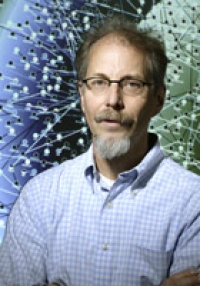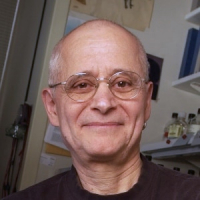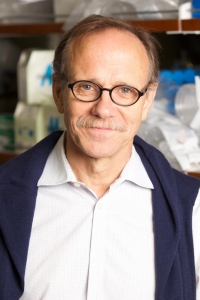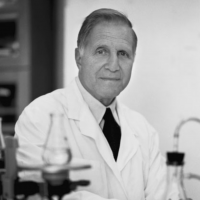Transposable Elements in Primate Evolution
Biographical Sketches: Speakers
Louisiana State University
Mark Batzer is currently LSU System Boyd Professor and Dr. Mary Lou Applewhite Distinguished Professor, Department of Biological Sciences at Louisiana State University, Baton Rouge, Louisiana. Dr. Batzer’s research interests focus on comparative genomics of human and non-human primates, mobile DNA, forensic genomics, and computational biology. Additional research interests include the identification of genes related to healthy aging in humans. Dr. Batzer is a AAAS fellow and is active in numerous organizations and advisory boards and panels. He currently serves as an Executive Editor for Analytical Biochemistry, Associate Editor for Genomics, Academic Editor for PLoS ONE, Editor-in-Chief for Gene and a member of the editorial boards for Mobile DNA, Investigative Genetics and the Repeated DNA Sequence Data Base.
NYU Langone Health
National Institutes of Health
After a career at the National Institutes of Health (NIDDK) I retired on July 1, 2022, retaining my affiliation as an active virtual member of the NIH community - a special volunteer with access to the NIH intranet, email, and computer and library facilities, carrying out computational studies. After pioneering biochemical studies on prokaryotic peptide chain elongation, we joined the nascent community of investigators studying biological properties of non-LTR retrotransposable elements (LINE-1 or L1). Well before the era of whole genome sequencing, we showed that ~20% of rat genomes consist of fossilized ancestors of its currently active L1 family. Corroboration by whole genome sequencing showed that L1 has had a defining effect on the mammalian genome including humans, where L1 is the only active transposon. Our analyses of primate L1 fossils revealed that L1 exerts a fitness cost on its host, the evolutionary mechanisms that insure ensure L1 survival and the mutational history of its host. The latter finding suggested that DNA repair could be mutagenic, which we verified experimentally, and which was confirmed by bioinformatic analyses by others. In April 2005 I was invited to be a member of UC San Diego’s Project for Explaining the Origin of Humans (CARTA).
Salk Institute for Biological Studies
Fred H. Gage is a professor in the Laboratory of Genetics and the past President (2018-2023) of the Salk Institute. He is an adjunct professor at UC San Diego, and emeritus Co-Director of CARTA. Dr. Gage concentrates on the adult central nervous system and unexpected plasticity and adaptability to environmental stimulation that remains throughout the life of all mammals. His work may lead to methods of replacing or enhancing brain and spinal cord tissues lost or damaged due to Neurodegenerative disease or trauma. Gage's lab showed that, contrary to accepted dogma, human beings are capable of growing new nerve cells throughout life. Small populations of immature nerve cells are found in the adult mammalian brain, a process called Neurogenesis. He is working to understand how these cells can be induced to become mature functioning nerve cells in the adult brain and spinal cord. They showed that environmental enrichment and physical exercise can enhance the growth of new brain cells and they are studying the underlying cellular and molecular mechanisms that may be harnessed to repair the aged and damaged brain and spinal cord. He is a member of the National Academy of Science and the Institute of Medicine.
Johns Hopkins School of Medicine
University of Michigan Medical School/Howard Hughes Medical Institute
Our research focuses on a class of human 'jumping genes' known as Long Interspersed Element-1 sequences (LINE-1s). LINE-1s comprise ~17% of human DNA. The vast majority of LINE-1s are mutated and are no longer mobile; however, ~100 elements in the average human genome retain the ability to 'jump'. On occasion, deleterious 'jumps' can result in various genetic diseases, including Hemophilia A, muscular dystrophy, and colon cancer. My laboratory is interested in learning more about the biology of LINE-1s. Using genetic, molecular biological and biochemical approaches, we are addressing the following questions: 1) How, when, and where do LINE-1s 'jump' 2) What is the impact of LINE-1 'jumping' on the human genome? 3) What host factors promote or restrict LINE-1 mobility? 4) Can we engineer LINE-1 sequences for practical purposes (e.g., as a gene delivery vector)? Our long-term goal is to gain a better understanding about how LINE-1 jumping leads to human disease and how this process has influenced the evolution of our genome.
Community Member








